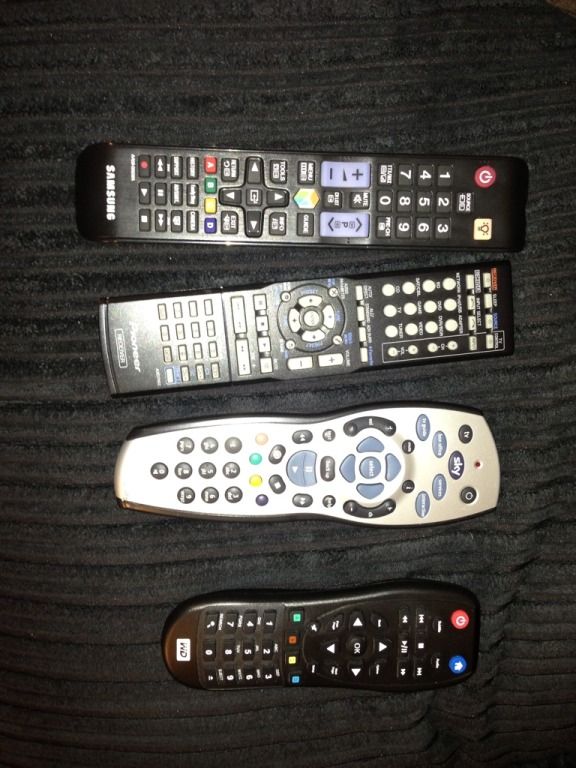There are dozens of options. What's right for you though will be dictated by your budget, and then by the level of control you want and how much work you are prepared to put in (or pay for) to achieve that.
Dealing with your PS3 is possible too. But not directly from the remote control. It will involve an adapter that plugs in to the PS3's USB socket. This will take Infra Red and convert it to commands that the PS3 can understand. The cheap ones have a limited set of command instructions. In other words, they'll do some functions but not all. The more expensive ones will handle a greater range of commands. This is important to remember when shopping. Not all PS3 IR to Bluetooth adapters are created equal. Prices for this part will range from £35 to over £100.
When it comes to remotes your choices fall in to three camps:
There's the basic universal remote. This is a dumb device that simply replicates commands. This is the kind of thing you can pick up from a supermarket or Amazon for £10 ~ £40.
What distinguishes the mediocre from the best in class is the device database and design. The remotes are programmed with a device database covering the most popular product on the market for the current period. If you have mainstream products from the last 5 years then the chance of the remote being able to work it are very high. If you happen to own an obscure make of TV from 30 years ago then the chance of it being listed is low. The good news though is that manufacturers use a generic set of IR commands specific to a brand. This means the IR code for Vol+ on your Samsung TV will be the same as sets from 10-15 years ago, and it won't clash with Philips or Sony or Panasonic etc. Look to brands such as One For All, Harmony and Philips for the most comprehensive IR database. One For All has a searchable database so that you can check a specific model of remote will definitely control your gear before purchase.
Then there's the simple learning and PC programmable remotes. These range in price from £30 to £200.
At the bottom end of this range are the remotes with a simple head-to-head IR learning facility. This gets rid of the total reliance on a built-in database. Head-to-head learning is exactly what it says. You point two remotes at each other and learn one key at a time from the donor to the new remote. This is useful if the new remote is missing a certain function. Learning like this is best done to supplement the existing command database. The reason is three-fold. First; the chances of finding a product where there's absolutely no commands in the database are pretty slim. Second; learning isn't without its problems. Stray light, incomplete command capture and user incompetence can make the learn process very frustrating. Since there's no way to see the captured code and check that it is clean then it's a case of suck it and see, then repeat. Third; it's a pain in the backside to learn a lot of codes.
In the middle and upper end of the price range is where you find most Harmonys. Starting at around £60 you'll notice the remotes start to add some form of screen. This is to try to deal with the problem of button overload. Look at your remotes. You'll find certain buttons that are unique e.g. Sky's backup and the Sky button, your surround kit's audio processing buttons, Search on the WDTV etc. It's impractical to produce a remote with a physical complete with legend for each of these functions. Adding soft buttons via the screen helps. However, it does introduce some problems of its own. You end up paging through screens to find functions. This is a by-product of Harmony's set-up wizard based on a universal template. They're quick to get set-up and running. But one size doesn't fit all.
At the top end of the market are the fully-customisable "Rolls Royce" touchscreen remotes. New prices start from £1000 up. But used prices start from under £100 for colour touchscreen.
In the consumer market these remotes are the last word in bespoke control. You are not restricted by wizards or databases. If you wish to use them there are set-up templates. But if you prefer to start with a blank canvas then you can have any button anywhere on screen. For a small sample of the range and breadth of creativity of screen layouts have a look
here Along side the creative is the practical side of things. Having a great looking interface is pointless if the remote doesn't do what's needed. Having a blank canvas helps. These remotes can be set up with exactly the layout and functions you need. Most of the best designs are simple, clean and elegant.




 )
)